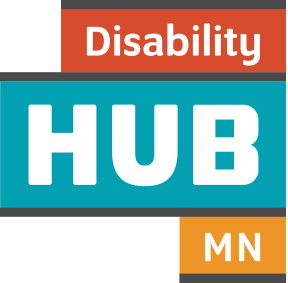Transition to adulthood_NEW topics:
Programs and services
Some individuals with disabilities will benefit from accessing formal services and programs. It is important that families get good information on what these services are intended to do and how best to navigate the systems so they can make an informed choice as to if a specific program is right for their loved one.
It is not mandatory for a person with a disability to receive services, nor is it guaranteed that services will be available to all who qualify for them. As always, families are encouraged to ask questions and learn for themselves what is available.
-
After-school and out-of-school programs through local schools and community organizations provide quality learning opportunities across Minnesota. Check out some after-school and out-of-school programs supported by the Minnesota Department of Education.
-
The Minnesota Department of Human Services (DHS) offers many services and programs for children with mental health needs. Depending on the services you're interested in, you might start with your child's health care provider, your health care plan, or your local county agency or tribe. Find phone numbers in this tribal and county directory.
-
Social Security benefits
Get the basics on benefits for children with disabilities (PDF) from the Social Security Administration, and use the child disability starter kit to see what to expect when applying. Then, see how to apply for disability benefits for your child.Other benefits
To apply for cash, food, child care or emergency assistance, use MNBenefits. Your application will be sent to your county agency or tribe for review. In some cases, you may be contacted for an interview. If you need immediate help, contact your county agency or tribe. Find phone numbers in this tribal and county directory.Benefits and work
Your child can work, even if he or she has a disability and gets benefits like Medical Assistance (MA) and Supplemental Security Income (SSI). In fact, MA and SSI are designed so people who work end up better off. Learn more about work and benefits » -
Your child may be able to complete driver training through the high school or a local driving school. If your child needs adaptations or additional supports, check out driver assessment and training options through Allina Health or Adaptive Experts.
-
A health care home is a primary care clinic or provider certified by the Minnesota Department of Health to coordinate care among a primary care team, specialists and community partners. A health care home supports team-based, coordinated, patient-centered care.
-
Health coverage is an important element in getting the care your family needs. Depending on your situation, you might have access to employer-sponsored coverage, Medical Assistance or MinnesotaCare. Or, you might choose to purchase your own health insurance through MNsure. Even if you earn too much money to qualify for Medical Assistance, your child might qualify for MA-TEFRA.
- Learn more about your health coverage options under Your Options.
- Learn more about preparing for your child's transition to adult health care.
-
For long-term services and supports — such as personal care assistance or waiver services — request a MnCHOICES assessment (PDF) from your county agency or tribe. Find phone numbers in this tribal and county directory.
Also talk to your child's health care provider about your child's medical needs, such as skilled nursing visits in your home, physical therapy, occupational therapy or speech therapy. Check with your insurance provider about what's covered and any steps you need to take to ensure coverage.
-
Adapting your home and/or vehicle for your child's changing needs can remove barriers and help your child feel included and able to participate in everyday life.
- If your child is eligible for a home and community-based waiver, ask your local county agency or tribe about the process to make home or vehicle modifications. Find phone numbers in this tribal and county directory. You'll need to follow an assessment, authorization and installation process for the modifications to be reimbursed through the waiver.
- If your child isn't eligible for a home and community-based waiver, consider other ways to get help with home and/or vehicle modifications, such as grants and resources for handicap vans and help building wheelchair ramps.
- If you adopted your child with special needs, the Adoption Assistance Program may reimburse certain modification costs. Check out reimbursement instructions for home modification and vehicle modification.
-
Minnesota's secondary schools and Vocational Rehabilitation Services work together to deliver services that support students’ transition from high school to competitive integrated employment. Learn about these programs and services »
-
If you have low income, the SNAP program can help you stretch your budget to get the food you need for nutritious and well-balanced meals. Get the details here:
-
Transition services help students with disabilities plan for moving towards independent living, employment, and postsecondary education or training. Services are outcome-oriented and based on a youth’s educational needs and preferences for their future. Learn more about transition programs and services »
Watch the video below and learn about the different ways young people were supported to be successful during their journey to adulthood.
